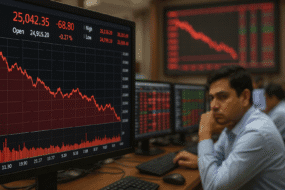New York/New Delhi – The US dollar has taken a sharp hit in global currency markets, driven by growing concerns over the long-term stability of the American economy. Despite US President Donald Trump appearing to hit the brakes on erratic trade moves, the damage to investor confidence appears to have already been done.
In a shift from traditional trends, investors are pulling out of dollar-backed assets — a phenomenon that usually runs contrary to market behavior during heightened volatility. Typically, when the VIX (Volatility Index) spikes and financial markets waver, the US dollar sees an influx of demand. However, recent days have seen a reversal of this norm.
Global investors are instead flocking to traditional safe-haven alternatives such as gold, the Japanese yen, and the Swiss franc. Simultaneously, emerging market currencies like the Indian rupee have seen some short-term strength amid the dollar’s decline.
Economists warn that the slump in the greenback signals a deeper issue — eroding global trust in US financial policy and economic direction. If the trend continues, the dollar’s reserve currency status may face renewed scrutiny.
This development has wide-ranging implications for international trade, investments, and currency reserves — particularly in economies closely linked to the dollar. Central banks and forex traders are now watching for the next moves by the US Federal Reserve and the Treasury to stabilize sentiment.





